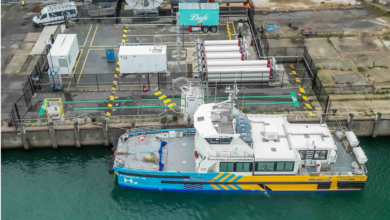Air New Zealand, Airbus to explore hydrogen potential in aviation
The initiative is a step towards understanding how hydrogen-powered aircraft could become a reality in New Zealand.

Air New Zealand (the flag carrier airline of New Zealand) and Airbus (aircraft manufacturer) will research the potential of hydrogen-powered aircraft in supporting the airline goal of meeting net-zero emissions by 2050.
Under the MoU, both partners will cooperate on a joint research project to better understand the opportunities and challenges of flying zero-emission hydrogen aircraft in New Zealand.
Air New Zealand will analyse the impact hydrogen aircraft may have on its network, operations and infrastructure, while Airbus will provide hydrogen aircraft performance requirements and ground operations characteristics to support Air New Zealand to develop its decarbonisation roadmap.
Currently, the partners will consider both hydrogen and battery electric aircraft as potential options for the shorter domestic flights, along with Sustainable Aviation Fuel (SAF) for long haul operations. The research will help to inform future decision making as they start to decarbonise the airline. Airbus is currently looking at three concepts for hydrogen-powered aircraft, including a turboprop, turbofan and blended wing option.
Greg Foran, CEO of Air New Zealand, said, “This agreement brings us a step closer to our net zero emissions by 2050 commitment, and to realising our aspiration to put low carbon solutions in place for our shorter domestic and regional flights in the next decade.”
Captain David Morgan, Chief Operational Integrity and Safety Officer in Air New Zealand, said, “We’ll be working closely with Airbus to understand opportunities and challenges, including achievable flying range and what ground infrastructure or logistics changes may be required to implement this technology in New Zealand.”
Anand Stanley, Airbus Asia-Pacific President, said, “The joint study will enable us to gain invaluable feedback on what airlines will expect and their preferences in terms of configuration and performance.”
